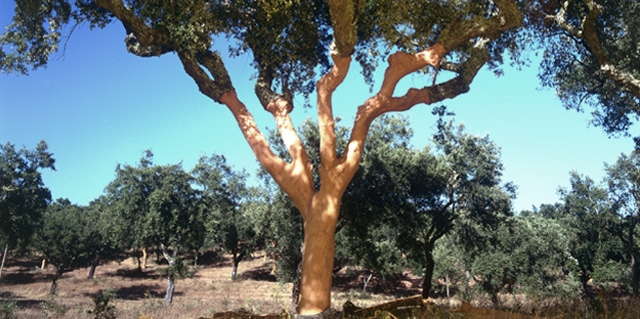Put A Cork In It!
We tend to take the humble wine cork for granted but it is, in many cases, the critical factor in preserving our wines and spirits. It protects them from the air outside their glass containers and preserves the qualities of the valuable nectars which are stored within. Many people will argue that synthetic or metal screw top closures are more effective and in the cheaper ranges, particularly of wines, they probably are. Connoisseurs, however, still believe that natural cork has an important role to play.

Cork is the bark of the Quercus suber or “cork oak” tree. A medium-sized, evergreen oak that covers millions of hectares in Spain, Portugal and North Africa. Unlike the frenzied yearly cycle of the wine industry, the evergreen oaks move like sloths, slowly expanding and growing the bark, known as orange bark. The cork oaks are first stripped of their bark 20 years after they are planted. They are then shaved of their bark every 9 years after that for up to 200 years. The date of the last harvest is marked on each tree. The first layer is known as “virgin” cork and is used to make articles of home decoration and granulated cork for insulation. Only when the third layer is removed can it be used for making cork stoppers.

On a cellular level, cork looks like a honeycomb of air pockets. These pockets make cork both watertight and fire resistant which is why it works so well to age wine. Its molecular structure makes watertight seals easily but also lets tiny bits of air move in or out allowing the flavour and aroma to evolve and become more complex over time. This evolution can take many years but beware, whilst water molecules pass quite slowly through cork, spirit molecules are much smaller and pass through more quickly. It is for this reason that many older cognacs always have a wax seal over the cork. Natural ageing of cognacs must be in sealed containers as the gradual loss of alcohol can, over many decades, cause the spirit to degrade to such an extent that it can become completely undrinkable.
The microcellular structure of cork enables it to retain its flexibility and elasticity so always remember to put the cork back in the bottle after use. Also, never let the contents of your spirits bottle come into contact with the cork since this will degrade its structure more rapidly.
